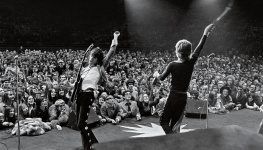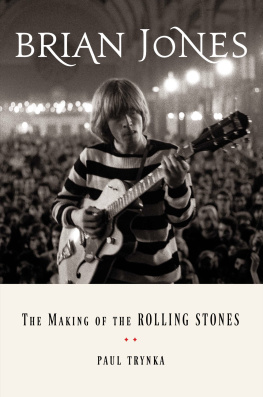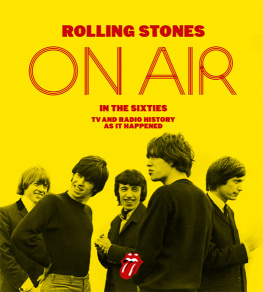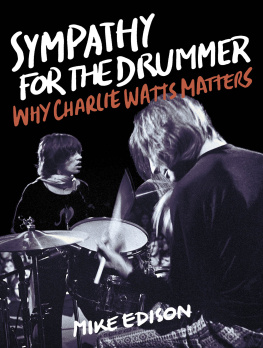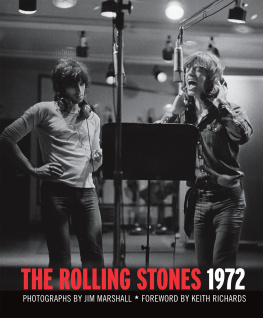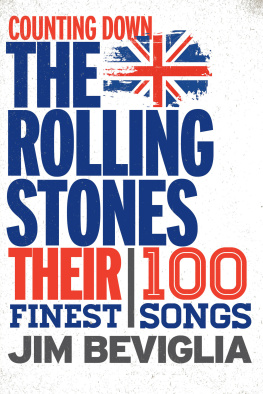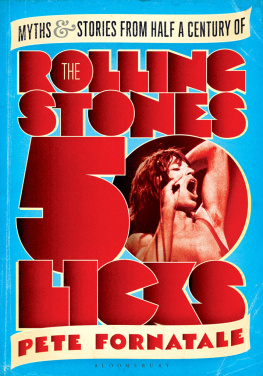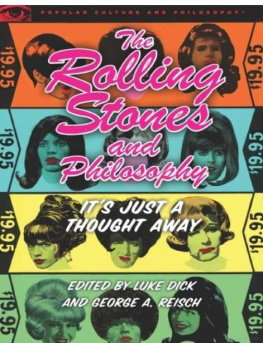Contents
Guide
Pages
Contents
INTRODUCTION
The Rolling Stones first performed in 1962 and, more than 50 years later, are still going strong. Their history as a band is well documented. But much of what has been written about their live shows up to 1967, when they largely withdrew from performing until they re-emerged as a live act in 1969 following the death of Brian Jones, is drawn from newspaper accounts of the time. This book shines a new light on that period of the Stones history. It uses first hand interviews and completely fresh material, garnered from people who saw them as they graduated from performing before a handful of people in small clubs to packed theatres and arenas around the world.
This is not a definitive history of those early concerts and neither does it pretend to be. As an original member of the group, Bill Wymans account of the bands early days in his autobiography, Stone Alone, drawn from his diaries and supplemented by press reports, is as close as we are likely to get to an accurate historical record. Keith Richards Life is a more impressionistic account of those formative years while neither Mick Jagger, who reportedly returned a 2m publishers advance when he couldnt remember certain details of the bands career and Bill declined to help him fill in the blanks, nor Charlie Watts, who has generally shunned the spotlight throughout the Stones career, seem likely to write their autobiographies. Brian Jones, of course, is no longer with us.
This is also not a definitive history of the bands early shows because it comprises more than 600 individual recollections of encounters with the Stones and it would be unrealistic to expect everyone who saw them or dealt with them in some way to have perfect recall. In some instances the accounts I have reproduced contradict each other. Some tales will have been embellished over the years and other memories will be incomplete. The Rolling Stones have not, of course, been averse to being economical with the truth themselves over the years and the Stones manager Andrew Loog Oldham famously engineered early headlines for the band by encouraging outrageous stories in the popular press. But what I have been most struck by is the number of people who, on seeing my plea for stories, contacted me and began their communication with I saw your letter and it brought the memories flooding back or similar.
The memory can play tricks and support acts or venues will have been misremembered. Where possible I have tried to correct such obvious but understandable errors. In a handful of instances I have had to triangulate the information provided by a contributor (the date, the venue and the supporting artists) to successfully identify a show and have edited the entry accordingly. I was unable to verify one enticing account suggesting that the Stones, Jimi Hendrix, Cliff Richard and Olivia Newton John all appeared at the same small club in the west of England and so have omitted it! Everything else is how it has been told to me. I have tried not to rewrite history as it has been recalled.



From their first show outside of the South East of England, at the Outlook Club in Middlesbrough on 13 July 1963, to them topping the US Billboard charts with (I Cant Get No) Satisfaction on 10 July 1965, took The Rolling Stones just two years. This phenomenal rise was achieved in an age where there was no YouTube, Internet or X Factor, when - to begin with, at least - there was in Britain no Radio 1 or Top of the Pops, and when the music industry was still controlled by record company moguls who thought they knew what young people should be listening to better than the young people themselves. The Beatles had opened peoples eyes and ears to the possibilities but were, to many teenagers, nice boys and part of the establishment. The Stones were different.
That the Stones achieved their stellar success so rapidly is testament to a number of factors. Not only was Britain ripe for change culturally and socially, emerging as it was from a period of post war austerity, but the band had a wealth of material to draw upon. They played a phenomenal number of concerts, racking up over 800 shows around Britain by the end of 1966, along with countless TV and radio appearances. In this period they were to learn the stagecraft that was later to earn them to accolade the Greatest Rock n Roll Band In The World.



It is perhaps hard now to understand the impact the Stones had on teenagers in the early Sixties and the extent to which their arrival challenged the established order. As Tom Wolfe said, The Beatles want to hold your hand but the Stones want to burn your town. This was certainly the view held by my father, who repeatedly stated that there were only three things wrong with this country ITV, Harold Wilson and Mick Jagger. Dads sentiments are reflected in the parental opinions of many of the books contributors.
This book, therefore, is not just about The Rolling Stones. It is a window on the past, a book about what it was like to be a teenager in early Sixties Britain, when you couldnt do things without your parents permission, when the pubs if you were old enough to go in them shut at 10.30pm and when there were only two TV channels.
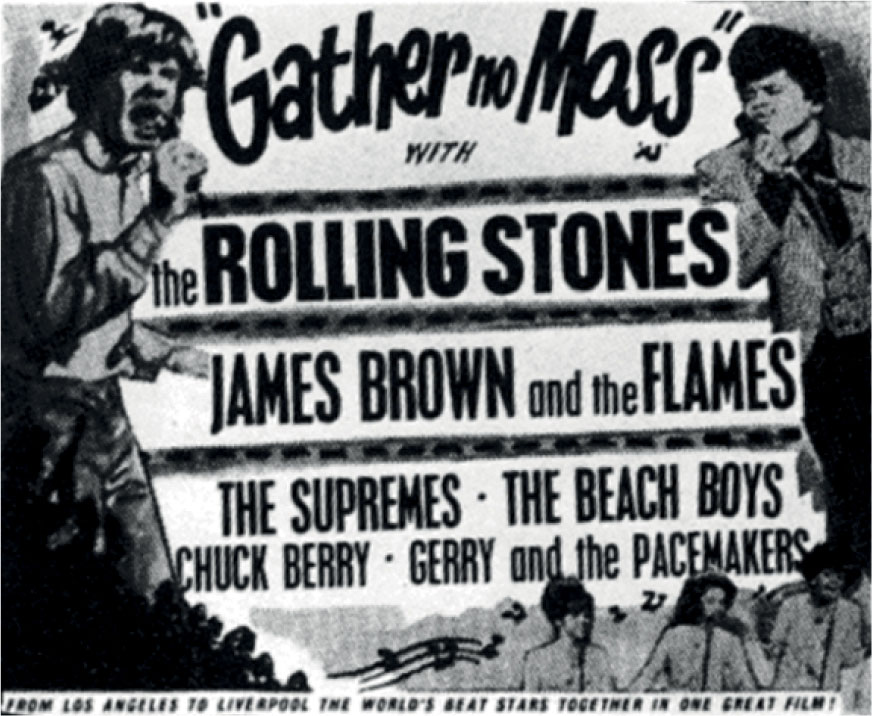


The 1964 T.A.M.I. Show concert film erroneously asserting The Rolling Stones are from Liverpool
BBC2 did not begin airing until 20 April 1964 and Channel 4 was more than 20 years away. Britain in 1962 was still in the clutches of post war austerity, with rationing coupons still a live memory for many. Teenagers hadnt really been invented until The Rolling Stones came along and opened peoples eyes to what was possible.
The book also contains accounts of their early appearances and elsewhere in the world including their first US tour and the impact they had on teenagers there. In the US particularly, the impact of the Stones on teenage perspectives on life comes through in peoples recollections.
A couple of housekeeping issues:
Keith was born Keith Richards but dropped the s from his surname in 1963 at the suggestion of the Stones then manager Andrew Loog Oldham to sound more hip. He only reinstated it in the 1970s. I refer to him, as have most of my contributors, as Keith Richards.



